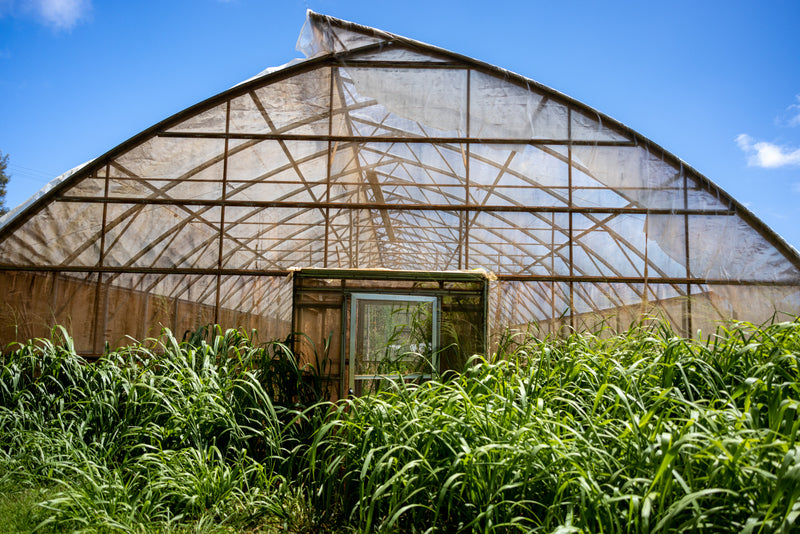How to Grow a Lemon Tree from Seed (Step-by-Step Guide for Beginners and Gardeners Alike)
Discover how to sprout, care for, and grow your own lemon tree from seed—indoors or outdoors—right from a store-bought lemon!
Introduction: Why Grow Lemon Trees from Seed?
Growing a lemon tree from seed is a fun, rewarding, and budget-friendly gardening project. Whether you’re dreaming of fresh lemons for homemade lemonade, fragrant flowers, or a lush indoor citrus plant, learning how to grow lemons from seed puts nature’s power in your hands.
While growing from seed takes longer than planting a grafted sapling, it’s an excellent way to learn patience, plant care, and the life cycle of citrus trees. Plus, it’s surprisingly easy—even beginners can get started using just a lemon, a pot, and some soil.
This guide covers everything from seed germination and soil selection to light requirements, fertilization, pruning, and transplanting, helping you raise your lemon tree from sprout to fruit-bearing beauty.

Table of Contents
- Why Start from Seed? Pros and Cons
- What You’ll Need to Get Started
- Step-by-Step Instructions to Grow a Lemon Tree from Seed
- Best Conditions for Growing a Healthy Lemon Tree
- Indoor vs. Outdoor Growing Considerations
- Timeline: From Seed to Fruit (How Long It Takes)
- Common Problems and How to Solve Them
- Companion Planting with Citrus
- FAQs About Growing Lemons from Seed
- Final Thoughts: A Citrus Journey Worth Taking
1. Why Start from Seed? Pros and Cons
Before you begin, it’s important to weigh the advantages and challenges of starting your lemon tree from seed.
✅ Pros:
- Low-cost or free—just use an organic lemon!
- A fun and educational process, especially for kids
- Decorative and fragrant houseplant even without fruit
- Deep satisfaction in growing a tree from scratch
❌ Cons:
- Trees grown from seed may not produce fruit true to type
- It may take 5–15 years to bear fruit (if ever)
- Some seedlings may be infertile or weaker than grafted trees
- Needs consistent care, especially in cooler climates
Still interested? Great! Let’s gather what you’ll need.
2. What You’ll Need to Get Started
Here’s your checklist for growing a lemon tree from seed:
| Item | Details |
|---|---|
| Lemon | Choose an organic lemon (non-organic may have treated seeds that won’t sprout) |
| Knife | To open and remove seeds |
| Paper towels | For drying or pre-germinating seeds |
| Small pots or seedling trays | With drainage holes |
| Potting mix | Light, well-draining citrus-friendly mix or seed-starting mix |
| Plastic wrap or dome lid | To retain moisture during germination |
| Sunny window or grow light | Lemons need plenty of light to thrive |
| Spray bottle | For gentle watering |
Optional: Hydrogen peroxide (for soaking to prevent fungal growth)
3. Step-by-Step Instructions to Grow a Lemon Tree from Seed

Let’s walk through the process from lemon to little tree.
Step 1: Extract the Seeds
- Cut a ripe, juicy organic lemon and remove several seeds.
- Rinse thoroughly to remove pulp and sugars (to prevent mold).
- Gently peel off the white seed coat using your nails (optional but helps sprout faster).
Step 2: Pre-Germinate the Seeds (Optional but Effective)
- Wrap clean seeds in a damp paper towel.
- Place in a ziplock bag or container.
- Store in a warm, dark place for 5–10 days.
- Check daily—look for a small white root (radicle) emerging.
Step 3: Plant the Sprouted Seeds
- Fill small pots or trays with moist potting mix.
- Plant the seed root-down about ½ inch deep.
- Water gently and cover with plastic wrap or a humidity dome.
- Keep the pot in a warm area (70–75°F or 21–24°C).
Step 4: Provide Light and Water
- As soon as green sprouts emerge, move the pots to a sunny window or place under grow lights for 12–14 hours per day.
- Water lightly when the top inch of soil dries out.
- Remove the humidity cover once the seedlings are established.
Step 5: Thin and Transplant
- After 3–5 weeks, choose the healthiest seedlings.
- Transplant into slightly larger pots with citrus potting mix.
- Ensure pots have good drainage.
4. Best Conditions for Growing a Healthy Lemon Tree
Lemon trees love warmth, sunlight, and moist but well-drained soil. Here’s how to mimic their natural environment:
Light:
- Minimum 8 hours of bright light per day
- Use full-spectrum grow lights if indoors
Soil:
- Use sandy loam or a citrus-specific potting mix
- pH 6.0–7.0
Water:
- Keep soil slightly moist but never soggy
- Water when top inch feels dry
- Reduce watering in winter
Humidity:
- 50–60% preferred
- Mist leaves in dry indoor air or use a humidifier
Temperature:
- Ideal range: 65–85°F (18–29°C)
- Protect from frost—never let it drop below 50°F (10°C)
5. Indoor vs. Outdoor Growing Considerations

Growing Indoors:
- Best for cold climates
- Choose dwarf varieties for containers
- Use grow lights if natural light is limited
- Rotate pots regularly for even growth
Growing Outdoors:
- Ideal in USDA zones 9–11
- Needs full sun and shelter from strong winds
- Can be planted in the ground after 1–2 years
- Consider moving potted trees inside during winter
6. Timeline: From Seed to Fruit (What to Expect)
Growing a lemon tree from seed is a long-term commitment. Here’s what the timeline generally looks like:
| Stage | Timeline |
|---|---|
| Germination | 1–3 weeks |
| Seedling growth | 2–3 months (3–6” tall) |
| Transplanting | After 4–6 months |
| Tree development | 2–5 years to reach 2–3 ft |
| First flowers | 5–15 years (if fruiting) |
Remember: seed-grown trees may never fruit or may produce different lemons than the parent plant.
7. Common Problems and How to Solve Them
| Problem | Cause | Solution |
|---|---|---|
| Yellowing leaves | Overwatering, poor drainage | Let soil dry between watering, improve drainage |
| Drooping or wilting | Underwatering, cold drafts | Water more consistently, avoid drafts |
| Leaf drop | Shock, sudden temp changes | Gradually acclimate to new conditions |
| No growth after months | Lack of light or nutrients | Use grow lights and apply a balanced citrus fertilizer |
| Fungal growth on soil | Excess moisture, poor airflow | Reduce watering, increase airflow, remove mold |
8. Companion Planting With Lemon Trees
:max_bytes(150000):strip_icc()/GettyImages-1208389164-58c14e504f3a464aa16e7556275fcf50.jpg)
Lemon trees benefit from certain companion plants that attract pollinators, deter pests, and help maintain soil health.
Good Companions:
- Marigolds (pest repellent)
- Lavender (attracts pollinators)
- Basil (deterrent for aphids)
- Nasturtiums (trap crops for pests)
Avoid planting too close to plants that compete for nutrients or shade the lemon tree, such as large bushes or aggressive vines.
Table of Contents
9. FAQs About Growing Lemon Trees From Seed
Q1: Do lemon trees grown from seed produce fruit?
Yes, but it can take 5–15 years—and there’s no guarantee the fruit will resemble the parent lemon.
Q2: Can I grow a lemon tree indoors year-round?
Absolutely. As long as it gets plenty of light, warmth, and humidity, it will thrive indoors in containers.
Q3: How tall will my lemon tree grow?
Seed-grown trees can grow 10–20 feet, but pruning and container limits help manage size indoors.
Q4: Do I need to graft my lemon tree?
Not necessarily. Grafted trees are better for predictable fruiting, but your seed-grown tree can still become a beautiful ornamental or potential fruit producer.
Q5: What fertilizer should I use?
Use a balanced citrus-specific fertilizer (such as 6-4-6 or 8-4-8) monthly during the growing season. Reduce in winter.
Q6: Can I plant seeds from any lemon?
It’s best to use organic lemons to avoid chemically treated seeds that may not sprout. Also, Meyer lemons often sprout more easily than Lisbon or Eureka.
Q7: My seed hasn’t sprouted—why?
Possible causes include: seed coat left on, old or treated seeds, too much moisture, or low temperatures. Try again using the paper towel method for better results.
10. Final Thoughts: A Citrus Journey Worth the Wait
Growing a lemon tree from seed may require patience, but the journey is rich with learning, satisfaction, and beauty. Whether your tree eventually bears fruit or simply thrives as a fragrant indoor plant, you’ll gain a deeper appreciation for nature’s cycles, as well as a new connection to your food and environment.
With the right care—sun, water, love, and a little citrus fertilizer—you can turn a simple lemon seed into a thriving tree that could one day brighten your home with blossoms and fruit.

